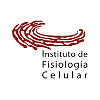Seminar by Prof. Galarraga:Comparison of the synaptic responses of striatal neurons to cortical and thalamic afferents.

Date
Location
Description
DATE: Wednesday, November 11
TIME: 10:00 – 11:00
VENUE: D015 Meeting Room, Level D, Lab 1
SPEAKER: Professor ELVIRA GALARRAGA PALACIO, Institute of Cellular Physiology, Universidad Nacional Autónoma de México
TITLE: Comparison of the synaptic responses of striatal neurons to cortical and thalamic afferents.
Abstract:
The striatum integrates cortical and thalamic information for basal ganglia processing. Striatal projection projection neurons (SPNs) and striatal interneurons are a main target of both, cortical and thalamic projections. However, contradictory results in the literature about these projections made us to ask whether all neuron classes in the striatum receive both inputs and if that is true, whether responses to each input were different. We also asked how striatal neurons are recruited after cortical or thalamic activation and if presynaptyic short term plasticity is similar or not.
Cortex and thalamus provide the main sources of excitatory inputs to the striatum. The intralaminar thalamic nuclei are most often associated with this projection in rodents and can be divided in the rostral central lateral (CL) and the caudal parafascicular (Pf) nuclei. Whole cell patch clamp recordings of striatal neurons in mouse brain slices while stimulating either cortical or thalamic inputs are presented. We used an optogenetic approach to isolate and selectively activate thalamostriatal afferents arising from the central lateral and parafascicular thalamic nuclei. Transgenic mice helped us to study the properties of their synaptic response in identified striatal neurons with the help of homozygous transgenic mouse lines: B6;129P2-Pvalbtm1(cre)Arbr/J, (PV-Cre) and Chat cre, combined with stereotaxic surgery to transfect the dorsal striatum with the Cre-dependent adenovirus CAG.FlexTdtomato, to identify target neurons. ChR2-YFP-CAMKII was also delivered in the intralaminar thalamic nuclei to activate the thalamostriatal pathway with light. Polysynaptic activation of corticostriatal responses are complex and contains both ionotropic glutamatergic and GABAergic components as well as intrinsic voltage dependent currents (Vizcarra-Chacon,2013). We show that the same complex suprathreshold responses appear after stimulating the intralaminar thalamic complex. The results suggest that intrinsic properties of the postsynaptic neurons predominate to shape these responses. Different classes of interneurons were similarly activated by both pathways. However, important differences in both neuronal recruitment and short term synaptic plasticity were disclosed.
Subscribe to the OIST Calendar: Right-click to download, then open in your calendar application.



